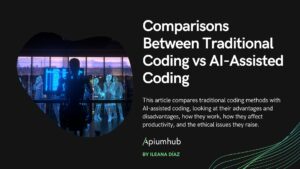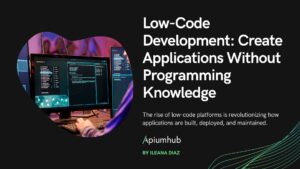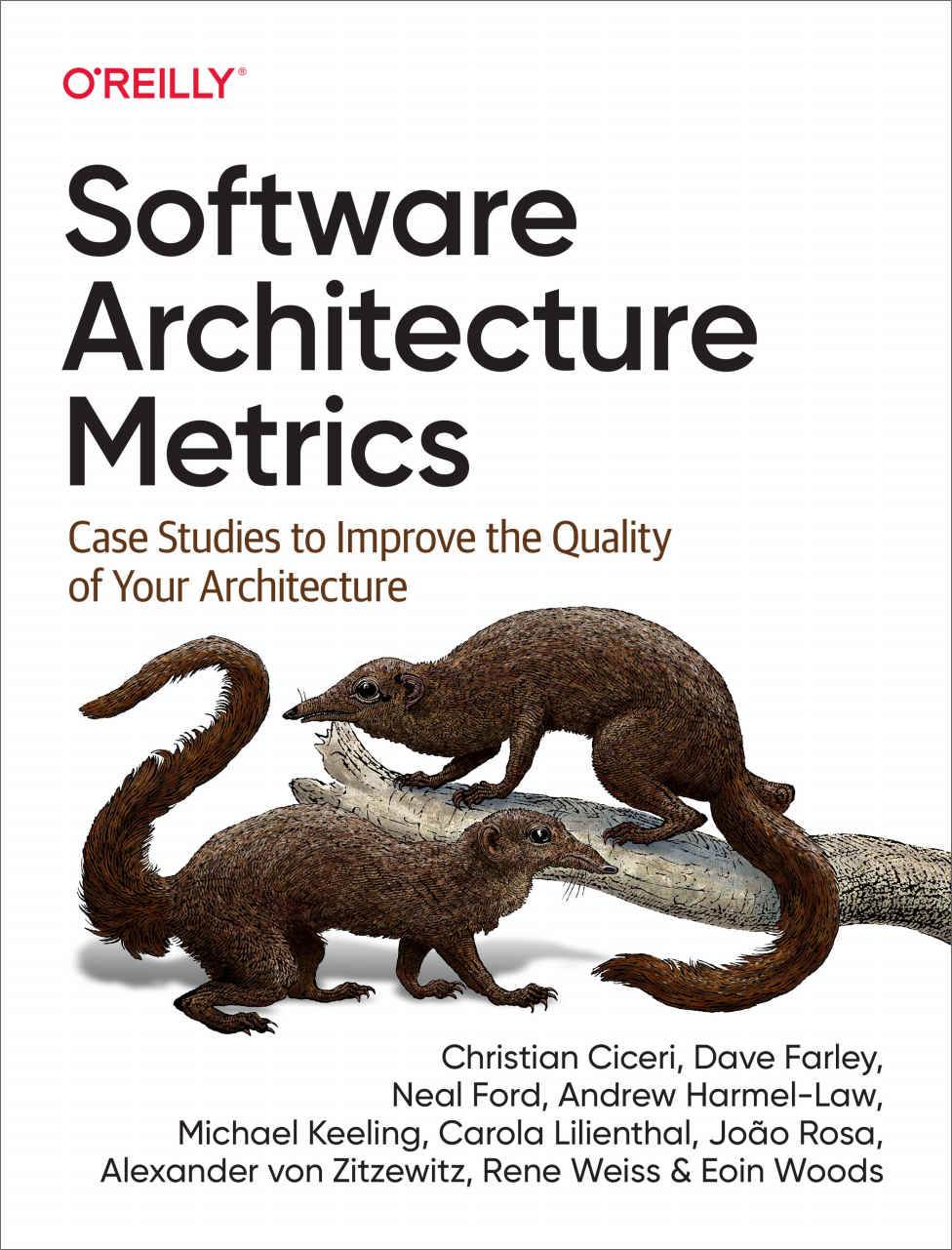Table of Contents
Artificial Intelligence is becoming increasingly integrated into our daily lives. From creating content and solving problems to supporting learning and communication, its influence is widespread and continually expanding. AI is no longer just a technological topic; it is now being discussed across multiple disciplines. Its presence is unavoidable, and its impact is too significant.
Among developers, one of the most pressing concerns is whether AI will eventually replace human roles. However, a more constructive question might be: how do frontend developers use AI to their advantage? Rather than fearing obsolescence, we can embrace AI to eliminate repetitive tasks, enhance productivity, and refocus our efforts on more meaningful and creative work.
In this article, we will explore frontend AI Tools like V0, WebCrumbs, Cursor, and Bolt.new. With an overwhelming number of frontend AI tools available, and more emerging every day, it is essential to find the right tool that aligns with your workflow and integrates into your development routine.
Frontend AI Tools
Vercel V0
Vercel’s v0 is one of the best AI tools for frontend work. By simply describing what you want, v0 generates fully functional UI code. You can create a wide variety of web pages, such as blog layouts, user dashboards, login and registration flows, product showcases, feature sections, navigation bars, and even complete landing pages for startups or e-commerce. This drastically reduces time spent on boilerplate UI work and accelerates prototyping for both developers and designers.
Behind the scenes, Vercel’s v0 leverages large language models (LLMs), like those developed by OpenAI, to interpret natural language prompts and convert them into structured, semantic React (specifically Next.js) components. It pairs these models with a carefully curated set of design and code patterns, primarily using Tailwind CSS for styling and leveraging Vercel’s best practices for Next.js architecture. Additionally, v0 uses context-aware prompt engineering and templates trained on high-quality open-source frontend codebases to ensure the generated results are clean, reusable, and consistent with modern frontend standards.
The newly released v0 API opens up even more possibilities. It allows developers to use v0’s generative capabilities programmatically, making it a perfect fit for tools like Cursor, the AI-enhanced code editor. By integrating v0 with Cursor, users can seamlessly generate frontend code directly inside their development workflow, with the AI context-aware of their existing codebase.
While the v0 API offers significant advantages, there are some limitations to consider:
- Framework specificity: Currently, the generated code is primarily tailored for Next.js and React, which may not align with projects using other frontend frameworks like Vue, Svelte, or Angular. On their website, they also warn that they support Svelte, Vue, and Remix, but with slightly less confidence compared to their expertise in React and Next.js.
- Customization requirements: For complex logic or stateful interactions, manual tweaking of the generated code might be necessary to meet specific project needs.
WebCrumbs
Webcrumbs, designed to assist both developers and designers, simplifies the process of translating design concepts into functional code, thereby enhancing productivity and reducing development time.
It operates by utilizing AI to generate frontend code components from user inputs, which can be either textual descriptions or images. For instance, by describing a desired UI element or uploading a design mockup, Webcrumbs can produce corresponding code snippets. This capability is particularly beneficial for rapid prototyping and iterative design processes. Also, it is framework-agnostic.
WebCrumbs supports multiple frontend frameworks, including React, Vue, Svelte, and plain HTML/CSS. This makes WebCrumbs stand out among frontend AI tools, especially for developers outside the Next.js/React ecosystem.
As an open-source tool, Webcrumbs encourages community involvement, allowing users to customize and extend its functionalities to suit specific project requirements. That way, developers can explore, modify, and extend the tool to fit their specific workflows, which is ideal for teams wanting more transparency or adaptability. Its user-friendly interface ensures accessibility for individuals with varying levels of technical expertise.
To experience Webcrumbs firsthand, visit their official editor, where you can immediately begin generating frontend components without the need for registration. The platform’s intuitive design ensures a smooth onboarding experience, enabling users to quickly integrate AI-generated code into their projects.
Cursor
Cursor exemplifies how frontend developers use AI in real time. It reimagines what it means to write and maintain code by embedding an intelligent AI assistant directly into your coding workflow. Whether you’re refactoring legacy code or debugging application logic, Cursor demonstrates the power of artificial intelligence in frontend development when combined with contextual awareness.
Cursor is a fork of VS Code with an integrated context-aware AI, which means it’s not just a code editor — it’s a true collaborator. By selecting code or writing natural language prompts (e.g., “add validation to this form” or “explain this function”), developers receive real-time, relevant suggestions based on their current project. From generating functions and writing tests to explaining legacy code or debugging, Cursor accelerates almost every coding task. It supports multiple programming languages, making it a powerful tool across frontend, backend, and full-stack development.
While Cursor is powerful, it’s not without its limitations. One common challenge is its occasional misunderstanding of large or complex codebases, especially when multiple files and dependencies are involved. Additionally, Cursor currently relies on cloud-based AI APIs, which may raise privacy or latency concerns for enterprise-level users.
To address these concerns, Cursor offers a Privacy Mode, which can be enabled in the settings. When turned on, Privacy Mode ensures that none of your code or usage data is stored or used for training by Cursor or any third party. This feature is especially valuable for developers handling sensitive or proprietary information, as it guarantees zero data retention. Even if you index your codebase, only temporary encrypted data is processed, and no plaintext code is permanently stored. This makes Cursor a practical and privacy-conscious choice, even for teams working in high-security or compliance-heavy environments. Another limitation is that while it speeds up development, it may encourage overreliance on AI-generated code. Developers still need to review and understand the output, especially for critical logic, performance considerations, or security implications.
Bolt.new
Among the best frontend AI tools, Bolt.new offers a full-stack development experience. Whether you’re a seasoned developer or someone with minimal coding experience, Bolt.new offers a streamlined approach to web development by integrating AI-driven code generation with an in-browser development environment.
Bolt.new currently offers a free tier, allowing users to explore its features and build full-stack applications without immediate cost. This makes it accessible for hobbyists, students, and developers experimenting with AI-powered development. However, heavy usage—especially involving frequent AI prompt executions—can lead to higher token consumption, which may require a paid plan in the future as the platform evolves.
As for framework support, Bolt.new is framework-agnostic: it doesn’t lock you into a specific stack. You can choose from popular frontend frameworks like React, Vue, Angular, and Svelte, and integrate them seamlessly with backend technologies and services like Supabase, PostgreSQL, or Stripe. This flexibility makes it a versatile choice for developers looking for creative freedom in both frontend and backend architecture.
At its core, Bolt.new utilizes advanced AI models, such as Anthropic’s Claude, to interpret user prompts and generate corresponding frontend and backend code. By simply describing the desired application—like “Build a CRM with contact notes and a Kanban board”—Bolt.new can produce a functional app structure within seconds. This process eliminates the need for manual setup, allowing users to focus on refining their applications.
The platform leverages StackBlitz’s WebContainers technology, enabling a full-stack development environment directly in the browser. This integration allows for real-time code editing, testing, and deployment without the need for local installations or configurations. Users can build applications using popular JavaScript frameworks and integrate tools like Supabase and Stripe for added functionality.
While Bolt.new offers a robust platform for rapid application development, there are areas where users should exercise caution:
- Code Regeneration: Each iteration may regenerate entire files, potentially overwriting custom changes. carlrannaberg.medium.com
- Lack of Version Control: Currently, Bolt.new does not offer built-in versioning, making it challenging to track changes over time.
- No Diff View: Unlike some other tools, Bolt.new doesn’t provide a diff view before applying changes, which can reduce control over code modifications.carlrannaberg.medium.com
- Complex Logic Handling: Implementing intricate backend logic may require manual adjustments beyond the AI’s capabilities. nocode.mba
- Token Usage: Extensive use of the AI features can lead to high token consumption, potentially increasing costs. reddit.com
Conclusion
Frontend AI tools such as Vercel’s v0, WebCrumbs, Cursor, and Bolt.new are highlighting the growing impact. These frontend AI tools redefine how frontend developers use AI in their workflows and emphasize the increasing importance of artificial intelligence in frontend development. By automating routine, repetitive, and often tedious coding tasks, they free up valuable developer time and energy, allowing teams to concentrate on the more intellectually rewarding aspects of software creation. Instead of manually writing boilerplate UI components, developers can now spend more time refining user experiences, crafting thoughtful architectures, or experimenting with innovative features.
The decision to adopt one frontend AI tool over another depends heavily on the specific goals of a project, the technology stack in use, and the dynamics of the team. However, regardless of which tool one chooses, a broader reality is becoming clear: integrating AI into the frontend development workflow is no longer an edge case or futuristic idea; it is rapidly becoming the industry standard.
This new paradigm demands a mindset shift. Developers must begin thinking of AI not as a threat or a competitor, but as a collaborator—a capable co-pilot that enhances, rather than diminishes, human creativity and engineering judgment. When used wisely, AI can become a trusted assistant that supports decision-making, offers valuable suggestions, and accelerates delivery.
But like any assistant, it has its limitations. The best results come not from blind reliance, but from thoughtful integration: developers who understand what the AI is doing, who intervene when necessary, and who always retain control over the final product will be the ones who benefit most. In this co-creative model, success stems not from replacing the human developer but from augmenting their workflow with precision and efficiency.
Despite their impressive performance in many areas, AI models often struggle when faced with complex logic, dynamic application states, or nuanced security and performance concerns. They may generate code that works on the surface but contains subtle bugs, inefficiencies, or architectural flaws that can lead to issues down the line. In some cases, over-reliance on AI-generated output can create a false sense of confidence, resulting in bloated or inconsistent codebases that require significant human cleanup. For this reason, experienced developers remain irreplaceable, not because they can out-code the AI on speed or volume, but because they bring critical thinking, contextual understanding, and quality assurance to every project.
Ultimately, the most valuable role of AI in frontend development today is as a force multiplier. These frontend AI tools don’t seek to eliminate the need for engineers; they enhance their ability to solve problems at scale. They’re ideal for scaffolding interfaces, suggesting code snippets, writing documentation, or translating design concepts into functional layouts. But true innovation, architectural decisions, and high-stakes debugging still require human intervention. Developers who embrace these tools, while staying aware of their limitations, will find themselves working not only faster but also smarter. The future of development isn’t AI versus humans—it’s AI and humans, building the web together.
Author
-
Graduated from Istanbul Technical University with a bachelor degree of computer engineering in June 2018. During her studies, she has been involved in projects in various areas including web development, computer vision and computer networks.
View all posts
More to Explore









